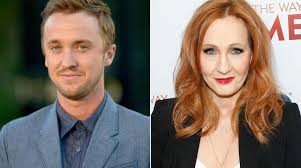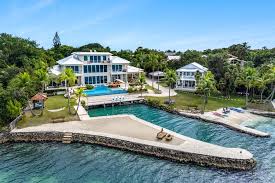In just a few days, the eyes of the Catholic world will turn toward the Sistine Chapel, where 133 cardinals are expected to gather on May 7 to choose the next pope.
But unlike previous elections, this conclave has a very different makeup—one that reflects the global vision Pope Francis has shaped over the past decade.
The cardinals entering the conclave won’t just be coming from the usual power centers of Europe.
Instead, they’ll represent corners of the world that, until recently, had never even had a cardinal.
Pope Francis’ Legacy: A Global College of Cardinals
When Pope Francis began appointing cardinals, he made it clear that he wanted to move away from tradition.
Rather than prioritizing major European archdioceses, he looked to the margins—places like Mongolia, Rwanda, and East Timor—elevating local bishops to the highest levels of Church leadership.
Of the 133 voting cardinals in this conclave, a striking 108 were appointed by Francis himself.
That means the vast majority will be casting their votes in a papal election for the very first time.
European Dominance Fades
Back in 2013, when Francis was elected, Europe—and especially Italy—had a strong grip on the College of Cardinals.
At that time, 28 Italian cardinals took part in the conclave.
This time around? Just 17 Italians will be voting.
Overall, only 52 of the 133 electors are from Europe. That’s less than half of the group, a clear departure from the past and a testament to the shift Francis has championed.
Africa and Asia on the Rise
Africa has seen its presence grow from 11 to 18 cardinal electors since the last conclave.
Asia has doubled its share—from 10 cardinals in 2013 to 20 in this year’s election.
Countries like Myanmar, Bangladesh, and Singapore will be represented for the first time in a papal conclave.
This increase brings new voices and perspectives into one of the most sacred and secretive processes in the Catholic Church.
New Voices From Unexpected Places
Francis’ decision to broaden the geographic diversity of the College means the upcoming conclave includes representatives from countries that had never had a cardinal before.
Among them: Haiti, Mongolia, Malaysia, Tonga, Cape Verde, Sweden, Iran, and South Sudan.
It’s a truly global representation that reflects a Church no longer centered in Europe, but spread across every continent.
Breaking the Cardinal Limit
One of Pope Francis’ boldest moves was to go beyond the traditional cap of 120 voting cardinals—first set by Pope Paul VI and reaffirmed by Pope John Paul II.
That limit was officially broken in 2017 and remains exceeded today.
As of now, 135 cardinals are eligible to vote, even though only 133 are expected to participate.
The only eligibility requirement under Universi Dominici Gregis (the apostolic constitution governing a papal election) is that a cardinal must be under the age of 80 and formally “created” as a cardinal prior to the pope’s death or resignation.
Greater Inclusion of Eastern Catholic Churches
Francis has also brought more balance between the Roman Church and Eastern Catholic traditions.
The current list of electors includes cardinals from churches such as the Ukrainian Greek Catholic Church, Syro-Malabar Church, Syro-Malankar Church, the Ethiopian Catholic Church, and the Chaldean Catholic Church.
These communities, often underrepresented, now have a voice in electing the new pontiff.
A Closer Look at the Numbers
Let’s break down how various regions are represented:
-
United States: 10 cardinals (one less than in past conclaves)
-
Canada: 4
-
Mexico: 2
-
France: 5
-
Spain and Portugal: 4 each
-
Germany and the UK: 3 each
-
Poland: 4
-
Other European countries: 1–2 each from nations like Hungary, Belgium, Serbia, Sweden, etc.
From Central America, countries like Cuba, Guatemala, and Nicaragua each have one voting cardinal.
South America brings seven from Brazil, four from Argentina, and one each from Chile, Colombia, and several others.
Africa’s Expanded Voice
Africa will be powerfully represented with 18 cardinals—up from 11 in 2013.
This includes one cardinal each from nations like Nigeria, Kenya, Madagascar, Rwanda, and Tanzania, plus two from Ivory Coast.
Some of these cardinals were born outside Africa but serve there, like Cardinal Jean-Paul Vesco (born in France) and Cardinal Cristóbal Lopez Romero (Spanish-born).
Asia and the Middle East: A Diverse Group
Asia’s 20 cardinals include:
-
Four from India
-
Three from the Philippines
-
Two from Japan
-
One each from China, Mongolia, Malaysia, Indonesia, and others
In the Middle East, there will be three voting cardinals: from the Holy Land, Iraq, and Iran—some of whom were born in Europe but serve Eastern churches in the region.
Oceania and the Pacific Islands Join In
Even remote Pacific nations are part of the story this time.
Four cardinals from Oceania will vote: from Australia, New Zealand, Papua New Guinea, and Tonga.
Some, like Cardinal Bycok and Cardinal Marengo, are originally from elsewhere but now serve in the region.
A New Era for the Catholic Church
This conclave marks a clear departure from the past.
Pope Francis’ appointments have reshaped the very structure of the College of Cardinals—not just in terms of geography, but in who gets to influence the direction of the Catholic Church.
The diversity of the electors could shape not just who is chosen as the next pope, but how the Church engages with a changing world.


